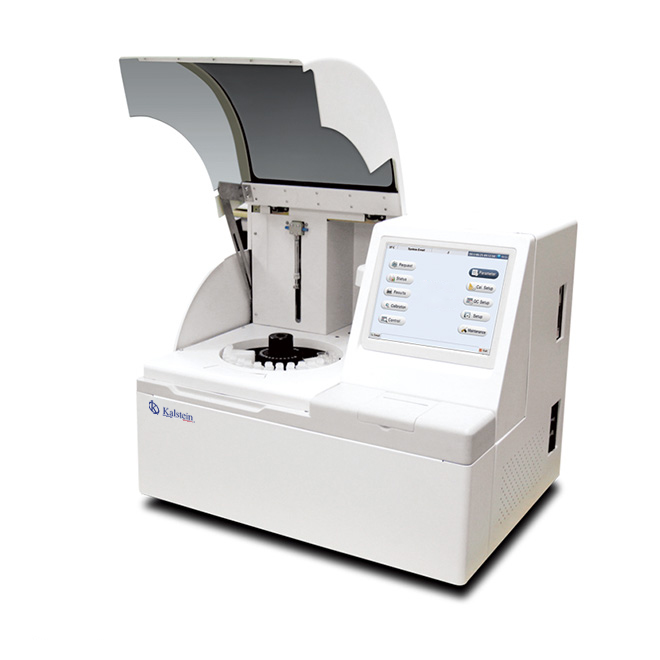A biochemical analyzer is a laboratory equipment, which has among its functions to measure the level in blood or other body fluid, of analytes such as glucose, cholesterol, triglycerides, uric acid, proteins and enzymes.
The main component of the biochemical analyzer is a spectrophotometer where it measures the concentrations of the different substances based on the intensity of color or based on the amount of substrate they use (this in the case of enzymes), after a series of chemical reactions. The advantage of this equipment is the speed and accuracy they have.
How to know? What biochemistry analyzer should I choose for my laboratory?
Biochemistry analyzers, also known as clinical chemistry analyzer, as well mentioned, are used to determine the metabolites present in biological samples such as blood or urine. The study of these fluids allows to diagnose many diseases. An example of the use of this type of analyzer is the measurement of urine creatinine to evaluate the filtration capacity of the kidneys.
When choosing a biochemistry analyzer, the need for automation of the determination, the specificity of the reagents and the level of precision of the measurements will be taken into account. Capacity (maximum number of samples analyzed at the same time) is also a factor to consider.
What measurement technologies does a biochemistry analyzer use?
There are several analytical methods of measurement. They are divided into two categories:
Optical techniques
- Colorimetry: it is the most common method. The sample is mixed with the appropriate reagent to produce a reaction that results in a color. The concentration of the analyte determines the intensity of the color obtained.
- Photometry: a light is projected on the sample with an appropriate wavelength, while a photodetector, located on the other side of the sample, measures the amount of light absorbed. It is directly related to the concentration of the analyte in the sample.
- Principles: absorbance (ability of a medium to absorb light), turbidimetry (measurement of turbidity produced by substances suspended in a liquid medium), fluorescence (light emitted by a substance that absorbs light at a wavelength and emits it in other wavelength).
Electrochemical techniques
- Direct potentiometry: the use of ion selective electrodes (ISE) is widespread and is mainly used for the determination of ions in samples. This method is used to measure ions such as Na +, K +, CI- and Li +. ISEs are sensors capable of determining the ion concentration in a solution by measuring the flow of current through an ion selective membrane.
- Indirect potentiometry: this method also uses ion selective electrodes. It gives rise to high rates and is the most used in central laboratories. It requires prior dilution, unlike direct potentiometry, and its results are expressed in moles.
Not forgetting that a biochemistry analyzer can offer several measurement principles.
What criteria allow you to evaluate the performance of a biochemistry analyzer?
There are several criteria that help evaluate the performance of the device:
- Use: automatic or semi-automatic. In the case of fully automatic analyzers, samples and reagents are prepared beforehand and introduced into the device, which will manage them and make a complete analysis. There is the possibility to configure the test chain and adjust the cadence. Fully automatic analyzers are more suitable for medium and large laboratories that need to analyze large quantities of samples.
On the contrary, semi-automatic devices are more suitable for auxiliary laboratories or medical consultations that treat small volumes of samples.
- Cadence: number of samples analyzed per hour. This cadence improves considerably with the use of ion selective electrodes.
- Random access mode: it offers a high degree of flexibility, especially for laboratories and hospitals with medium or high activity rates. These centers must face increasing imperatives and, therefore, reduce processing time to increase productivity. With random access, it is possible to load samples randomly and continuously and obtain results, patient by patient, in very short terms.
Thinking of you at Kalstein, we offer you high-quality, high-performance Biochemical Analyzers. That’s why we invite you to take a look at our equipment available HERE

